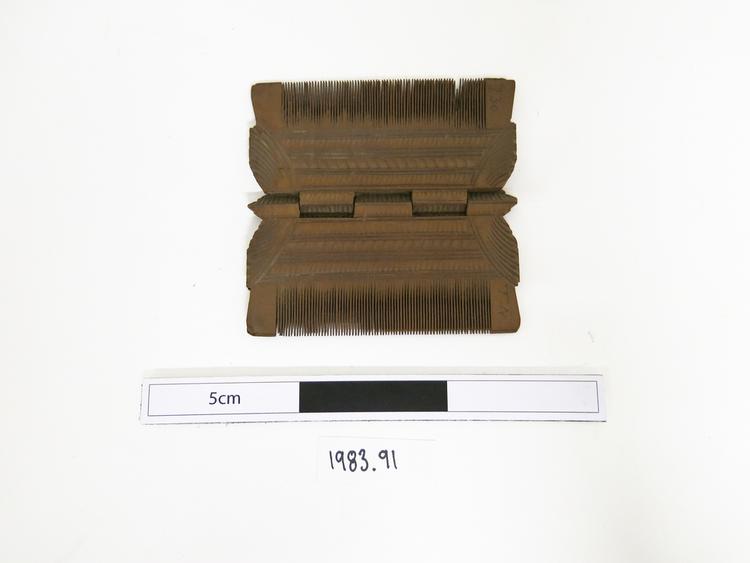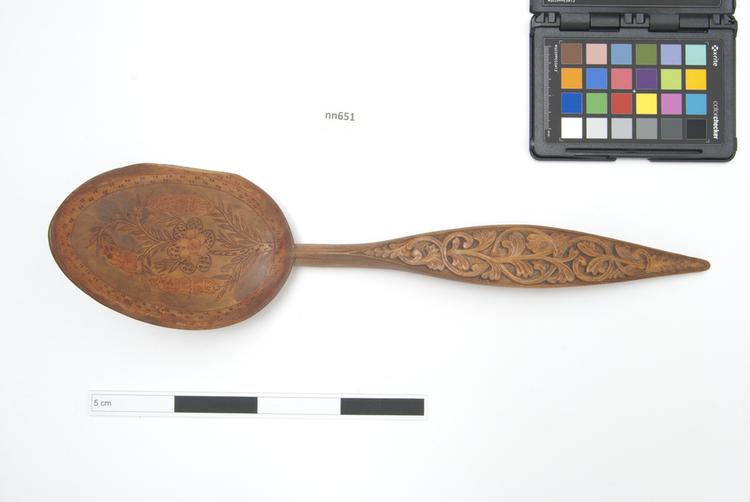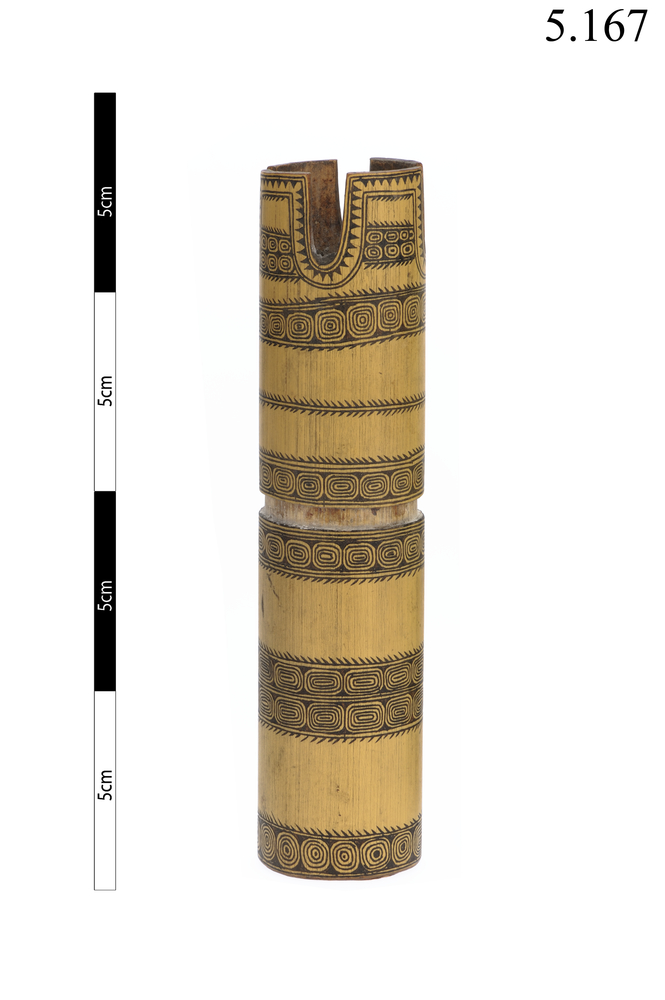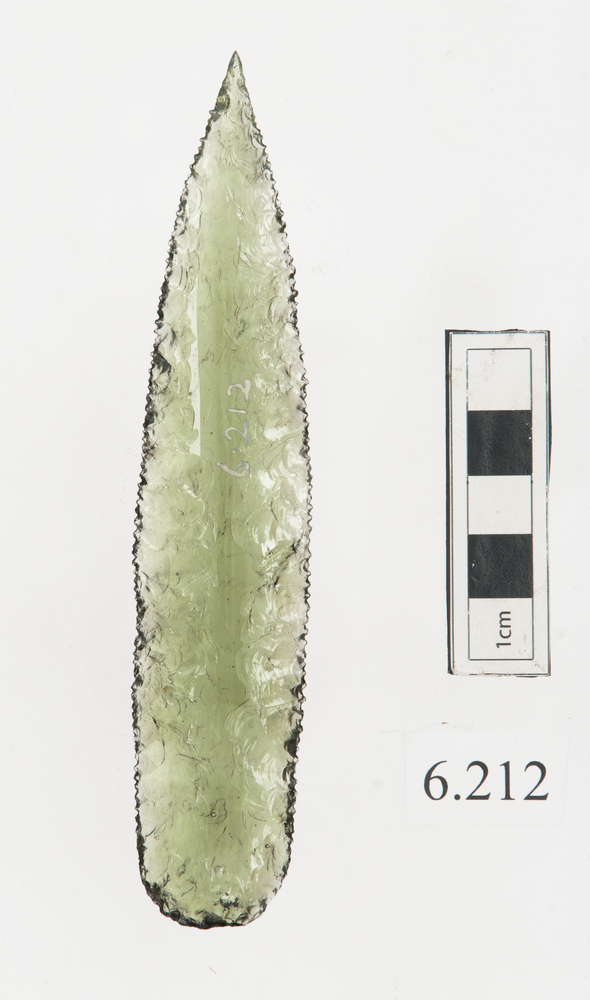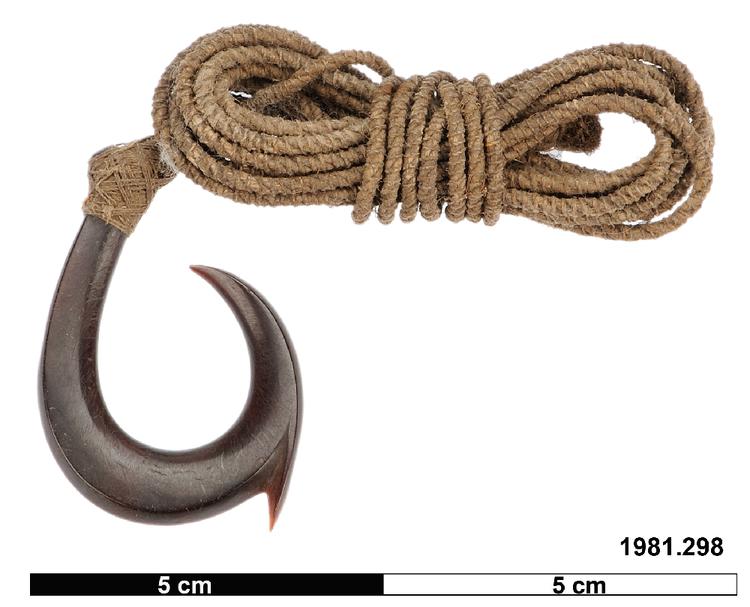
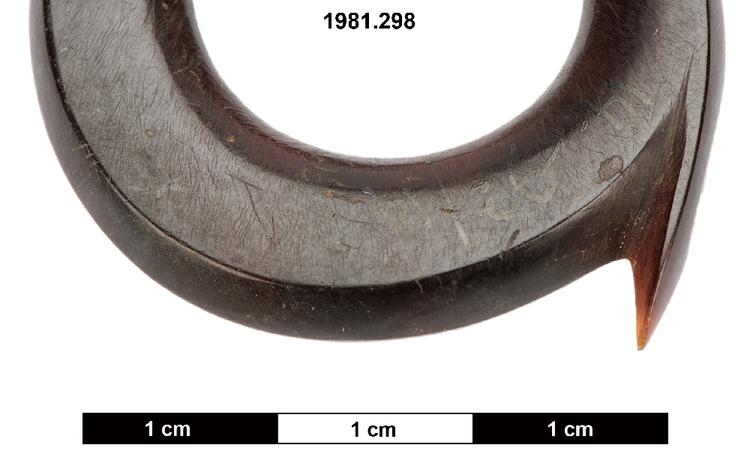
Rounded fish hook with a barb made from turtle shell bound to a line made of string.
Barbed Fish Hook, Matau, New Zealand Maori Spiral and barbed forms have a strong presence in Maori art, and although this fish-hook is almost entirely functional, there is still something distinctively Maori about its curves. The shell of the Hawksbill Turtle (Eretmochelys imbricata bissa) was an uncommon material for making still hooks (that is, hooks which are set to remain mostly still in the water), and wood, shell and bone were much preferred. However, the tohunga whakairo (carver) has done a masterful job in integrating the hook, shank and barb sections into a single refined form. The turtleshell has been boiled to soften it, flattened out and allowed to re-harden, before being chiselled and ground into shape. Like most Maori fish-hooks, this one has a finely woven snood securing the butt of the shank to the fishing line, both line and snood being fashioned from plaited harakeke fibre (Phormium tenax, the New Zealand Flax). The way in which the hook’s main point and barb oppose each other is clever: while the barb is a bait-hook primarily intended to secure a piece of meat, its alignment with the point also allows the whole hook to act as a gorge, giving the fisherman the chance to take the fish in two different ways. Turtleshell, vegetable fibre. Mid-19th Century. Formerly in the collections of the Welsh National Museum and transferred to the Horniman Museum with other ethnographic specimens in 1981.



